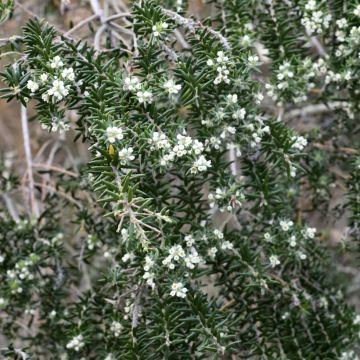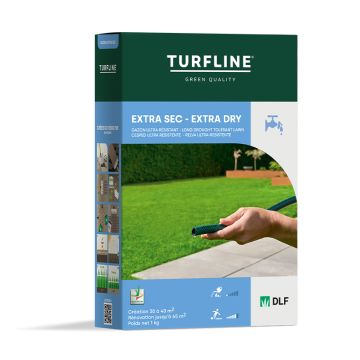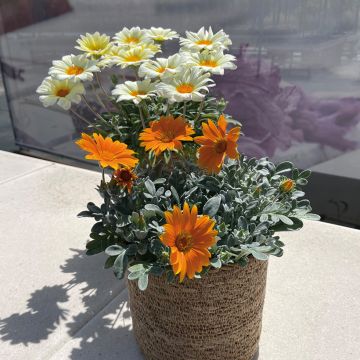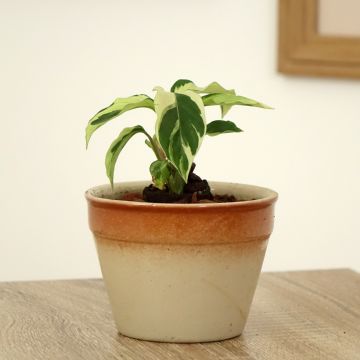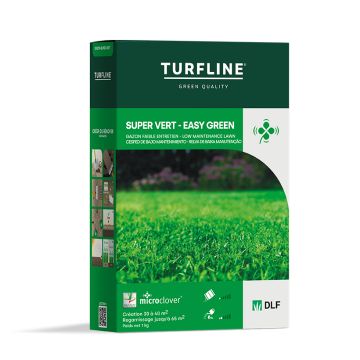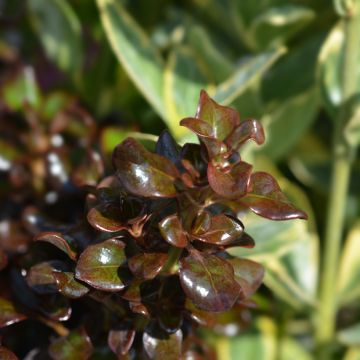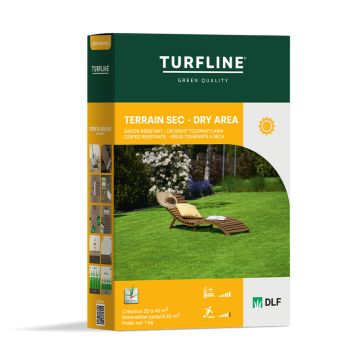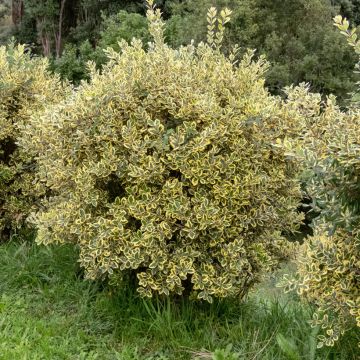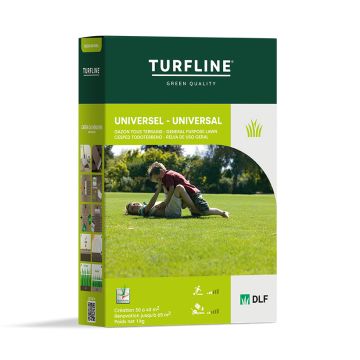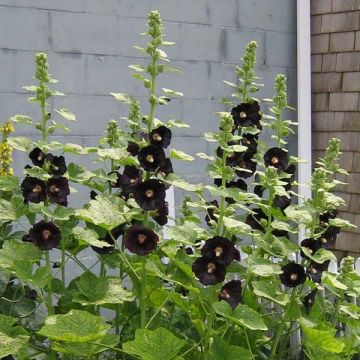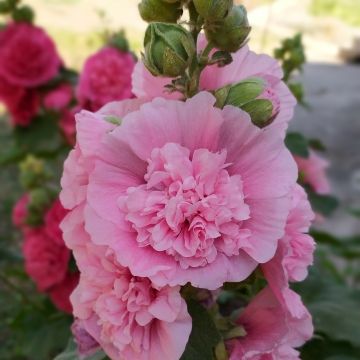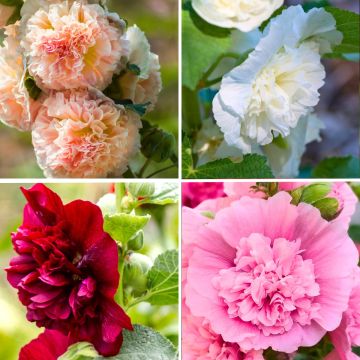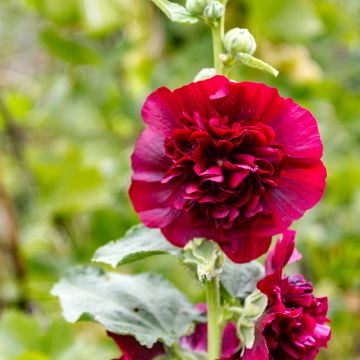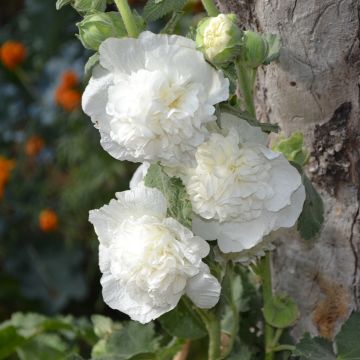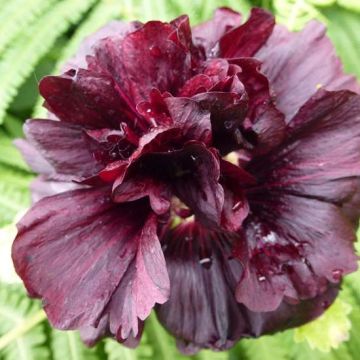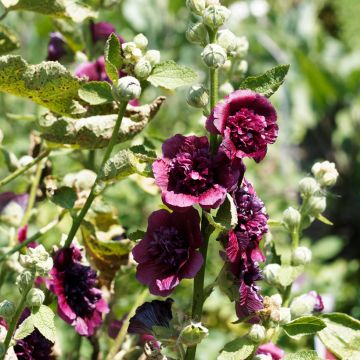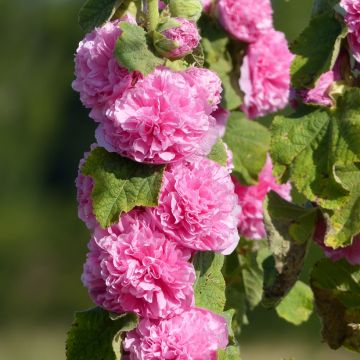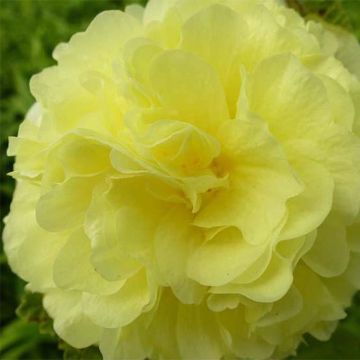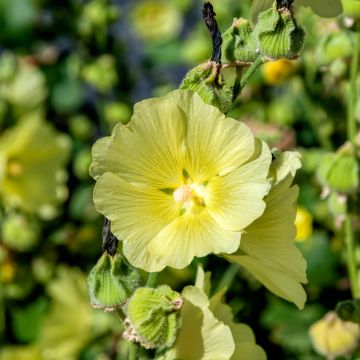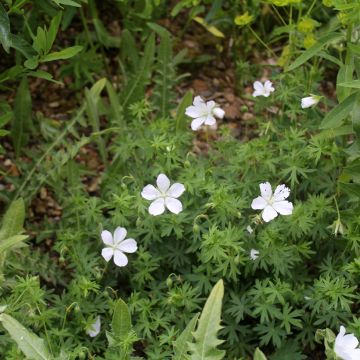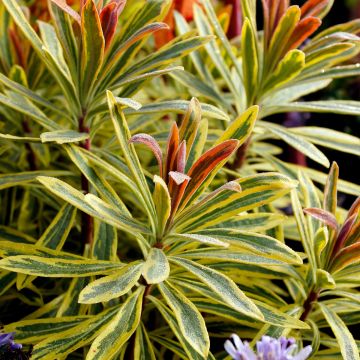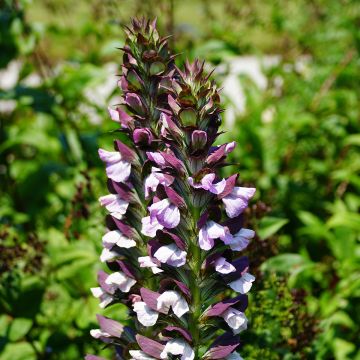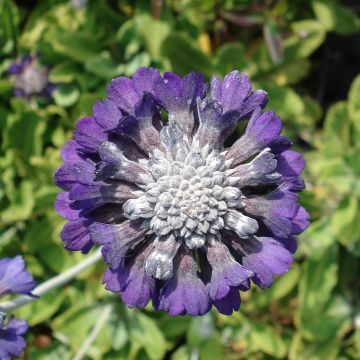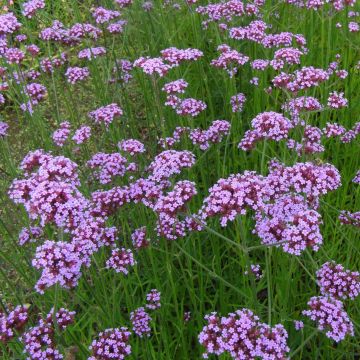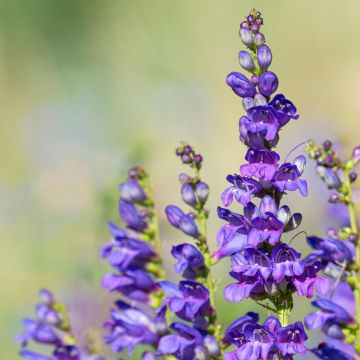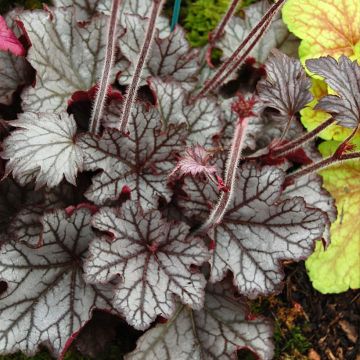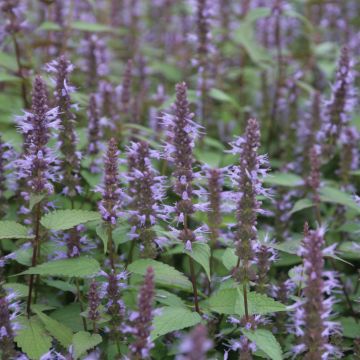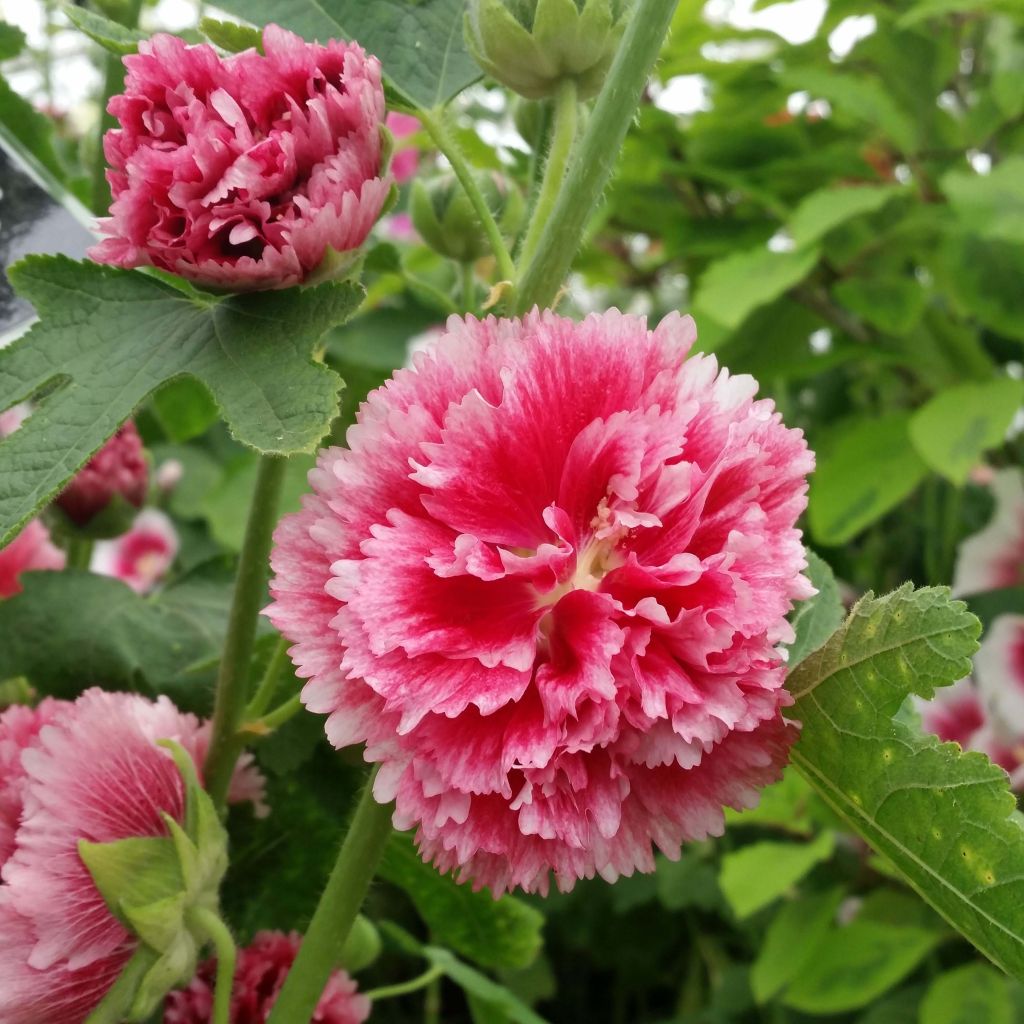

Rose trémière - Alcea rosea Fiesta Time
Alcea rosea Fiesta Time - Hollyhock
Alcea rosea Fiesta Time
Hollyhock
Why not try an alternative variety in stock?
View all →This plant carries a 12 months recovery warranty
More information
We guarantee the quality of our plants for a full growing cycle, and will replace at our expense any plant that fails to recover under normal climatic and planting conditions.
From €7.90 for pickup delivery and €6.90 for home delivery
Express home delivery from €8.90.
Does this plant fit my garden?
Set up your Plantfit profile →
Description
The Hollyhock or Alcea rosea Fiesta Time is a more biennial than perennial variety, with a compact habit that is more resistant to wind and well-suited for pot cultivation. It also has the ability to flower in the first year. Its flowers are double, cherry pink to red with white margins, all these shades combining on curiously fringed petals. This astonishing variety offers prolonged flowering, on stiff and sturdy stems, abundantly filled with buds. Whether perennial or biennial, it is very easy to combine in perennial borders and spectacular in large pots. It tolerates ordinary but well-drained soil, even poor, chalky and stony soil.
The Hollyhock is also known by its Latin name Althaea rosea, and its vernacular names adopt all the accents of our regions: it is called Passe-rose, Rose à bâton, Rose papale or primerose. Belonging to the mallow family, it originates from Asia Minor and is often naturalized in natural gardens, fallow fields, and mounds of soil. 'Fiesta Time' is a shorter variety, with very double flowers, derived from this wild plant. It is a compact, well-branched plant that will not exceed 90 cm (35in) in height. It forms a rosette of rounded, hairy and rough leaves, from which a strong flower stalk emerges, growing very quickly. These spike-like inflorescences are covered with large buds that open in a staggered manner from June to August, from bottom to top, into large, very double flowers whose texture wonderfully reflects light. They display a cherry pink to intense red color, margined with white. The petals are fringed on their periphery. Throughout this period, they will attract bees and butterflies to your garden. The flowering gives way to numerous fruits filled with seeds that self-sow in the most unexpected areas, seemingly chosen by the plant itself: at the base of walls, in poor and stony soils, in wall crevices, etc. Its taproot system makes transplantation delicate, especially for well-established plants.
Widely spread in abandoned gardens or fallow fields in our countryside, the Hollyhock is often cultivated at the back of borders or against a wall that protects it from strong winds. The vibrant colour and compact habit of this variety will allow you to create superb combinations with light perennials such as gauras, perennial flax, damask nigellas, or paniculate gypsophiles, either in the ground or in a large container on the terrace. This plant is said to tolerate juglone, a substance secreted by walnut roots; you could try sowing it at the base of a walnut tree, if there is sufficient light. One can attempt to tame this Fiesta Time hollyhock in large pots on the terrace. The hollyhock is an edible plant, the floral buds can be consumed raw in salads and the young leaves can be eaten raw or cooked.
The black-flowered hollyhock (Alcea rosea Nigra) is both ornamental and medicinal. Its seeds yield an oil with drying properties. Rich in mucilage, it has soothing, emollient, expectorant, laxative, and appetizing properties, although less pronounced than those of its cousin, the Marshmallow (Althea officinalis) used by herbalists.
Alcea rosea Fiesta Time - Hollyhock in pictures
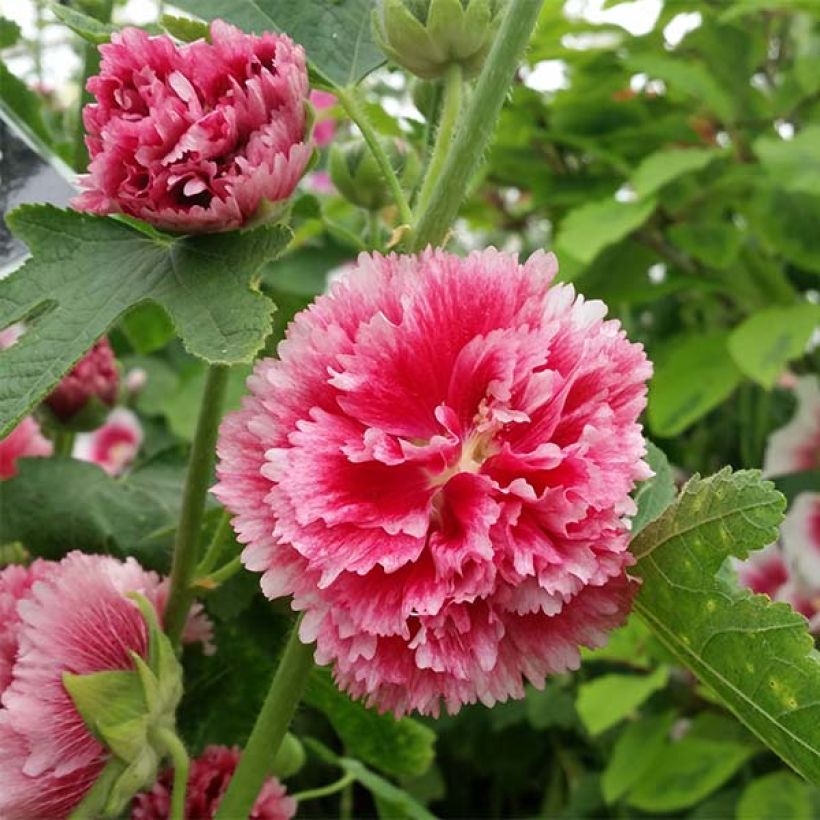

Flowering
Foliage
Plant habit
Botanical data
Alcea
rosea
Fiesta Time
Malvaceae
Hollyhock
Cultivar or hybrid
Other Alcea rosea - Hollyhocks
View all →Planting and care
Trémière flowers appreciate warm situations, sunlight, and can adapt to ordinary soil, even clayey, limestone, poor or stony. These plants with a tap root do not appreciate being transplanted when they are too developed. Care must be taken not to break this root when handling. The rosea species is resistant to drought and very hardy, it is sensitive to slugs and particularly susceptible to rust. Excessive moisture should be avoided and preventive treatment with a fungicidal is necessary.
In October, remove the faded flower spikes.
Planting period
Intended location
Care
This item has not been reviewed yet - be the first to leave a review about it.
Summer flowering perennials
Haven't found what you were looking for?
Hardiness is the lowest winter temperature a plant can endure without suffering serious damage or even dying. However, hardiness is affected by location (a sheltered area, such as a patio), protection (winter cover) and soil type (hardiness is improved by well-drained soil).

Photo Sharing Terms & Conditions
In order to encourage gardeners to interact and share their experiences, Promesse de fleurs offers various media enabling content to be uploaded onto its Site - in particular via the ‘Photo sharing’ module.
The User agrees to refrain from:
- Posting any content that is illegal, prejudicial, insulting, racist, inciteful to hatred, revisionist, contrary to public decency, that infringes on privacy or on the privacy rights of third parties, in particular the publicity rights of persons and goods, intellectual property rights, or the right to privacy.
- Submitting content on behalf of a third party;
- Impersonate the identity of a third party and/or publish any personal information about a third party;
In general, the User undertakes to refrain from any unethical behaviour.
All Content (in particular text, comments, files, images, photos, videos, creative works, etc.), which may be subject to property or intellectual property rights, image or other private rights, shall remain the property of the User, subject to the limited rights granted by the terms of the licence granted by Promesse de fleurs as stated below. Users are at liberty to publish or not to publish such Content on the Site, notably via the ‘Photo Sharing’ facility, and accept that this Content shall be made public and freely accessible, notably on the Internet.
Users further acknowledge, undertake to have ,and guarantee that they hold all necessary rights and permissions to publish such material on the Site, in particular with regard to the legislation in force pertaining to any privacy, property, intellectual property, image, or contractual rights, or rights of any other nature. By publishing such Content on the Site, Users acknowledge accepting full liability as publishers of the Content within the meaning of the law, and grant Promesse de fleurs, free of charge, an inclusive, worldwide licence for the said Content for the entire duration of its publication, including all reproduction, representation, up/downloading, displaying, performing, transmission, and storage rights.
Users also grant permission for their name to be linked to the Content and accept that this link may not always be made available.
By engaging in posting material, Users consent to their Content becoming automatically accessible on the Internet, in particular on other sites and/or blogs and/or web pages of the Promesse de fleurs site, including in particular social pages and the Promesse de fleurs catalogue.
Users may secure the removal of entrusted content free of charge by issuing a simple request via our contact form.


































